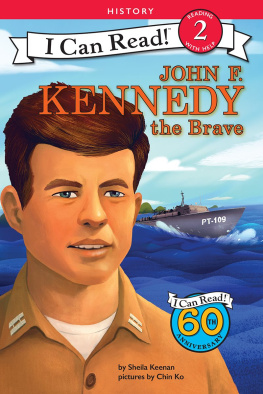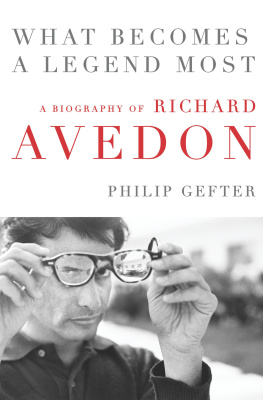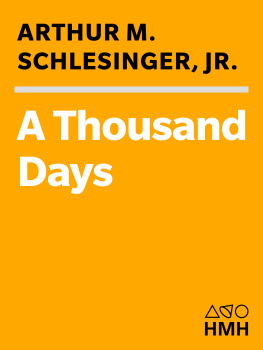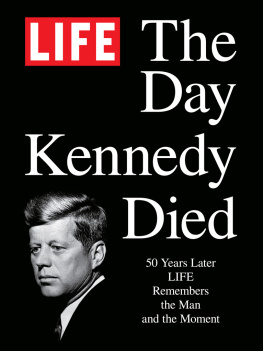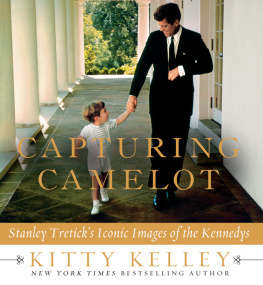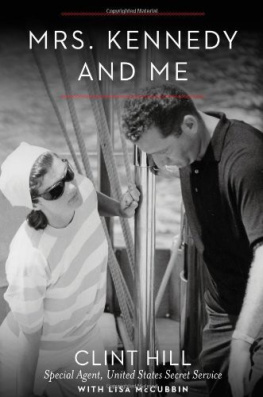RICHARD AVEDON THE KENNEDYS PORTRAIT OF A FAMILY
Shannon Thomas Perich | Foreword by Robert Dallek

This book is dedicated to the memory of my mother, Susan Whitley Thomas, and my own family, Scott, Thomas, and Maeve
CONTENTS
In 1901, William McKinley, a popular second-term president, was assassinated in Buffalo, New York. In 1944, 43 years after his death, he had joined the ranks of other largely nameless, faceless presidents like the two Harrisons, William Henry and Benjamin, Millard Fillmore, Rutherford B. Hayes, James A. Garfield, and Chester Arthur. McKinleys wife and family were as obscure as most retired or defeated members of Congress.
Forty-three years after John F. Kennedys abbreviated presidency at the hands of an assassin, JFK, Jacqueline, and the children, Caroline and John Jr., remain as vital a part of the national political scene as if the Kennedys were still in the White House. Unlike McKinley, who Theodore Roosevelt, Woodrow Wilson, and Franklin D. Roosevelt so greatly eclipsed, Kennedy has not had to stand in the shadow of Lyndon B. Johnson, Richard M. Nixon, Gerald Ford, Jimmy Carter, George H.W. Bush, Bill Clinton, or George W. Bush, all of whom left (or in George W.'s case will leave) the White House under one cloud or another. Only Ronald Reagan seems to vie with Kennedy for the publics continuing affection, but no one in the Reagan family can match the star quality of the Kennedy clan.
Kennedys appeal, however, rests on more than the flawed records of his successors. Its not as if Kennedys presidential performance was without its own failings: the disastrous invasion of Cuba at the Bay of Pigs in April 1961; the unsuccessful meeting with Nikita Khrushchev in Vienna in June 1961; the failed efforts to topple Castros government that helped provoke the Cuban Missile Crisis in October 1962; and the expansion of Americas military involvement in Vietnam between 1961 and 1963, which some have described as the prelude to Lyndon Johnsons ruinous war that ultimately resulted in more than 58,000 U.S. military deaths, have not been sources of Kennedys high standing with so many Americans for over four decades.
The enduring attraction to Kennedy has much more to do with his inspirational qualities. Presidents seem to be remembered less for their domestic and foreign policy accomplishmentsunless there were extraordinary far-reaching actions such as FDRs social security law, LBJs civil and voting rights measures, or such decisive military victories as Lincolns defeat of secession in the Civil War and FDRs triumph over Nazism, fascism, and Japanese militarism in World War IIthan their famous pronouncements. Washingtons Farewell Address, Monroes Doctrine, Woodrow Wilsons Fourteen Points, FDRs nothing to fear but fear itself, Eisenhowers warning about the military-industrial complex, and LBJs invocation of a Great Society are cases in point.
Kennedy gave the country more than one memorable phrase: most famously Ask not what your country can do for you. Ask what you can do for your country; and the still resonant Mankind must do away with war or war will do away with mankind.
Yet ultimately, in this age when visual images seem to make a greater impression than words on people all over the world, it is the abundant and easily accessible television tapes and photographs of Kennedy and his family that continue to excite attraction to and affection for what can fairly be described as Americas first family.
Kennedy was our first television president. His memorable first TV debate with Richard Nixon during the 1960 presidential campaign has been a model of how to reach undecided voters, though no candidate since Kennedy has been as successful in using such a moment to gain a significant advantage in a close election. People who heard the KennedyNixon debate on their radios thought that Nixon had won, but the much larger viewing audience saw Kennedy as the winner. It was not just Kennedys appearance but the contrast with Nixons that served JFK so well. Nixon, dressed in a light gray suit, faded into a fuzzed outline, one observer said, while Kennedy in his dark suit had the crisp picture edge of contrast. A pale, thin Nixon showed the aftermath of a hospitalization from a knee infection. Mayor Richard Daley of Chicago, speaking of Nixon, quipped, My God! Theyve embalmed him before he even died.
Fewer things served Kennedy so well during and since his presidency as his use of live televised news conferences. Those meetings with the press were unprecedented and considered risky-a verbal slip or awkward body language before the cameras could prove to be a serious political disadvantage. But Kennedy understood that television was a great benefit to him in promoting support for his domestic and foreign policies. His youthful appearance combined with his evident charm, wit, and ability to articulate his policies converted many in the press and millions of citizens into Kennedy admirers and supporters. The news conference, a regular feature of his administration, educated Americans and inspired confidence that he was providing effective leadership during some of the most difficult moments of the cold war.
The photographs in this book are first of all a tribute to the artistry of Richard Avedon, Americas greatest twentieth-century photographer. As Adam Gopnik said in The New Yorkers October 2004 tribute to Avedon and his genius, To know Dick Avedon was to know the sun. He radiated out daily and early on a circle of friends, family and colleagues, who drew on his light and warmth for sustenance.... As long as people remain curious about life in the twentieth century, they will turn to Avedons photographs to see how it looked and what it meant.
As long as interest about JFK, Jackie, and the children exists, people will turn to Avedons Observations of the 35th First Family. The introduction to this book says it best, Avedons photographs of John and Jacqueline Kennedy and their two children combine politics, style, public interest, and photographic history to provide a glimpse of historical figures who have deeply touched American life. Avedon took these portraits of Jack and Jacqueline, husband and wife, father and daughter, mother and daughter, mother and newborn son, Caroline and John Jr. in early January 1961 before the presidential inauguration. To a large degree, from Kennedys perspective, they were an exercise in expanding and solidifying his hold on the public. Having won the election by the narrowest of margins and being the youngest man ever elected to the highest American office with the youngest first lady in the countrys history, Kennedy was mindful of the need to build national and international confidence in his capacity to govern.
Richard Avedons photographs humanized Kennedy and his family and encouraged the view that here was a man and a woman who were America at its best and were born to govern. Long before the myth of Camelot took hold in the aftermath of the presidents assassination, Kennedy had established himself and his family as the countrys democratic royalty: a man and a family who inspired a renewed belief in Americas capacity to withstand the domestic (an abrasive racial divide) and foreign (Communisms challenge) threats to the countrys future. More than 40 years later, with new national divisions and external dangers undermining hopes for better days, people will turn once again to Avedons photographs and memories of the Kennedys with a renewed belief in the promise of American life.
Robert Dallek, December 2006
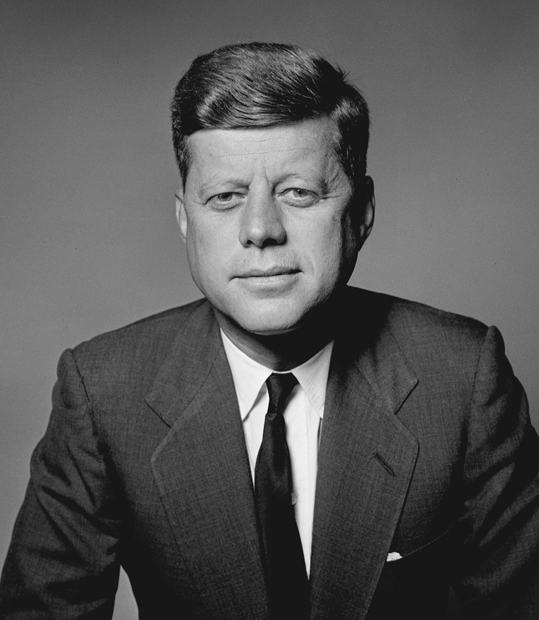
Next page

